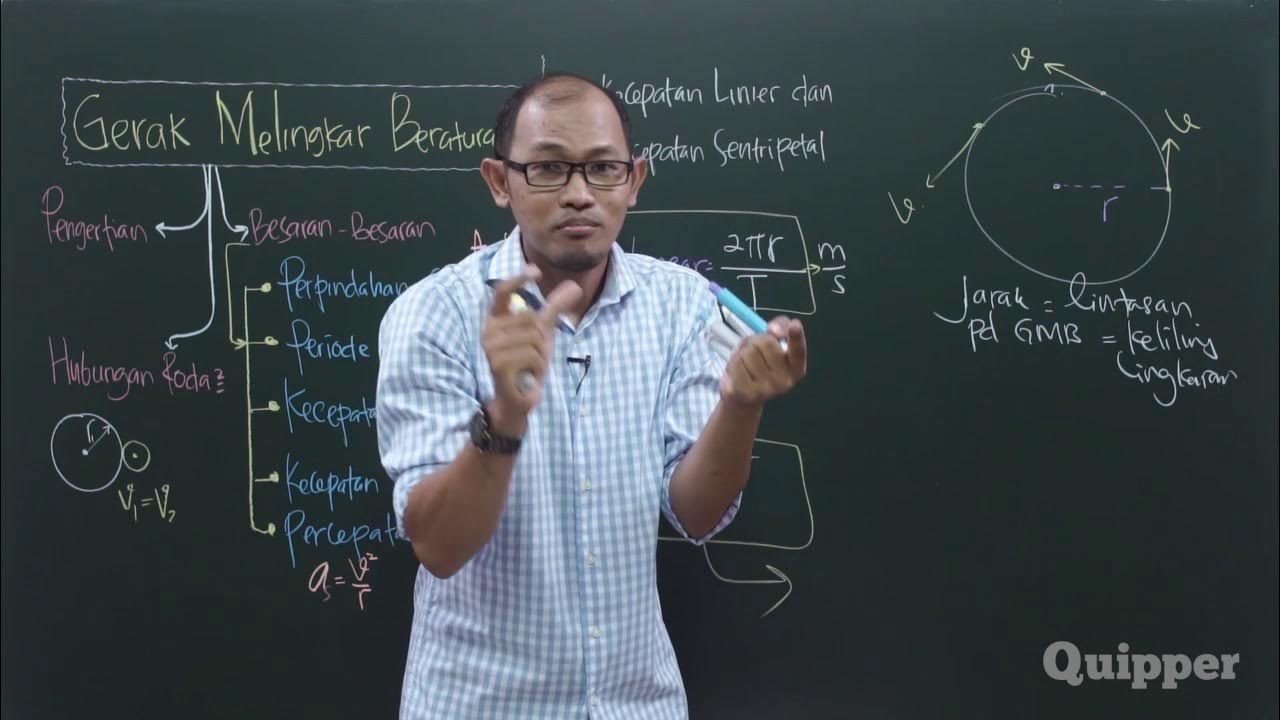Centripetal force and acceleration intuition | Physics | Khan Academy
Summary
TLDRThis video explains the concept of centripetal force in circular motion, emphasizing that while an object's speed may remain constant, its velocity direction changes, requiring a force to act on it. Using clear examples like a yoyo, orbiting satellites, and a car on a racetrack, the script demonstrates how the change in velocity always points toward the center of the circle. The key takeaway is that centripetal force, whether it's tension in a string, gravity, or friction, is what keeps an object moving in a circular path.
Takeaways
- 😀 Centripetal force is the force that causes an object to move in a circular path, acting towards the center of the circle.
- 😀 An object moving in a circle with constant speed experiences a continuous change in the direction of its velocity, not the magnitude.
- 😀 The velocity vector of an object in circular motion is always changing direction, even though the object’s speed remains constant.
- 😀 If no force acts on an object, its velocity will not change, and it will continue in a straight line, according to Newton's 1st Law.
- 😀 The direction of the force responsible for circular motion is always perpendicular to the velocity vector and points toward the center of the circle.
- 😀 The change in velocity (acceleration) in circular motion is directed towards the center of the circle, which is the centripetal acceleration.
- 😀 Centripetal force can be visualized as the force pulling an object toward the center of its circular path.
- 😀 The yoyo example demonstrates how tension in the string acts as centripetal force, pulling the yoyo towards the center of its circular motion.
- 😀 In orbit, gravity acts as the centripetal force that keeps satellites or moons in their circular paths around planets.
- 😀 On a racetrack, friction between the tires and the road provides the centripetal force that allows a car to travel in a curve.
- 😀 Without friction, a car on a racetrack would be unable to turn and would continue straight, demonstrating the importance of centripetal force in everyday life.
Q & A
What is the key concept discussed in the video regarding an object moving in a circular path?
-The key concept discussed is circular motion, where an object moves in a circle at constant speed, but its velocity direction continuously changes. This change in direction requires a force known as centripetal force, which acts toward the center of the circle.
How does the velocity vector change as an object moves in a circle?
-The velocity vector changes direction at each point along the circular path. Although the magnitude (speed) of the velocity remains constant, its direction keeps changing, requiring a force to keep the object moving in a circle.
Why does an object not continue in a circular path if no force is acting on it?
-According to Newton's First Law of motion, if no force is acting on an object, it will continue in a straight line at a constant velocity. For an object to follow a circular path, a force must be applied to constantly change its direction.
What does the change in velocity (acceleration) vector look like in circular motion?
-The change in velocity vector, or acceleration, is always perpendicular to the direction of the velocity vector and points toward the center of the circle. This inward direction of acceleration causes the object to move in a circular path.
What is the force that causes an object to move in a circular path, and how does it act?
-The force that causes an object to move in a circular path is called the centripetal force. It acts inward, towards the center of the circle, continuously changing the direction of the object's velocity to maintain circular motion.
What is the difference between centripetal and centrifugal force?
-Centripetal force is the inward force that pulls an object toward the center of its circular path, while centrifugal force is a fictitious force that people often feel as pushing them outward, but it does not exist in reality. Centripetal force is the actual force at play in circular motion.
Can you explain the concept of centripetal acceleration in simple terms?
-Centripetal acceleration is the acceleration that changes the direction of an object's velocity as it moves in a circle. It is directed toward the center of the circle and causes the object to continually change its direction while maintaining constant speed.
How is the centripetal force experienced in the example of a yo-yo?
-In the yo-yo example, the centripetal force is the tension in the string. When you spin the yo-yo, the string pulls it towards the center, causing the yo-yo to move in a circular path.
What keeps a satellite in orbit around a planet like Earth?
-A satellite in orbit is kept in its circular path by the centripetal force of gravity. The Earth's gravitational pull pulls the satellite inward, preventing it from flying off into space and allowing it to maintain its orbit.
What role does friction play in a car moving on a circular racetrack?
-In the example of a car on a circular racetrack, the centripetal force is provided by friction between the tires and the road. This friction prevents the car from sliding outward and keeps it moving in a circle.
Outlines

This section is available to paid users only. Please upgrade to access this part.
Upgrade NowMindmap

This section is available to paid users only. Please upgrade to access this part.
Upgrade NowKeywords

This section is available to paid users only. Please upgrade to access this part.
Upgrade NowHighlights

This section is available to paid users only. Please upgrade to access this part.
Upgrade NowTranscripts

This section is available to paid users only. Please upgrade to access this part.
Upgrade Now5.0 / 5 (0 votes)





